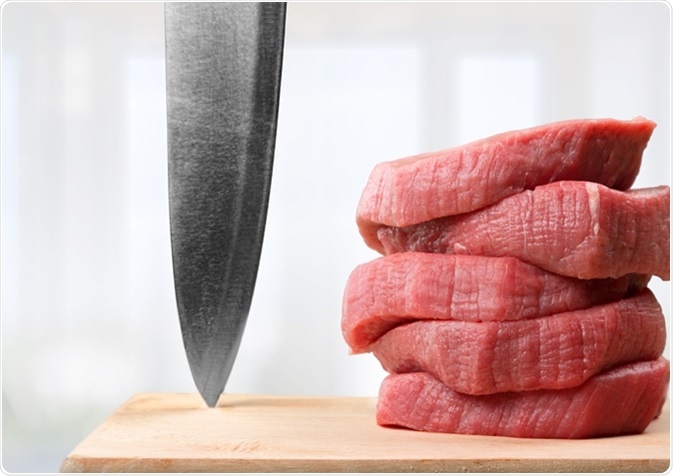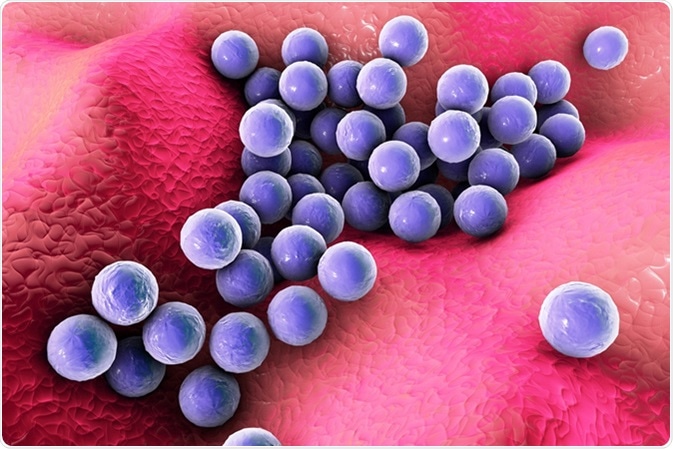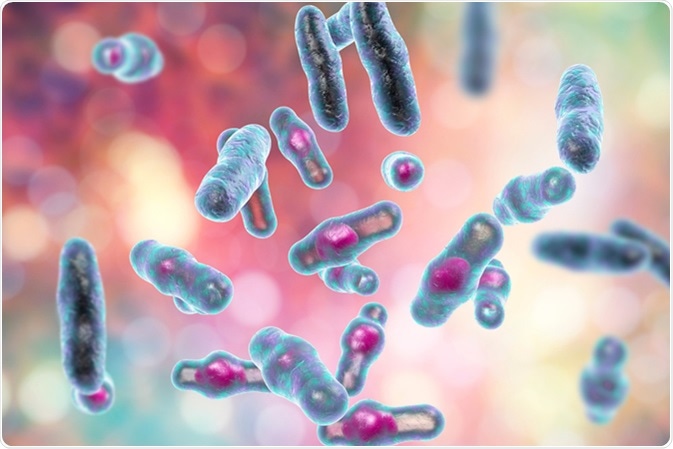Contamination of food by microbes is a public health concern around the world. Episodes of food poisoning due to microbial contamination have led to a large number of food recalls over the years, particularly of meat products that have caused outbreaks of dangerous illnesses.

Image Credit: Billion Photos / Shutterstock
How Microbes Contaminate Meat
The growth of microbes in meat is governed by a number of intrinsic and extrinsic factors. Intrinsic properties of meat, such as pH and moisture can promote microbial growth, whereas temperature is an extrinsic factor.
Fresh meat has a high water content that is favorable for the growth of microorganisms. It also generally contains bacteria, including those that can cause diseases. The animals naturally carry bacterial species like Salmonella and E. coli in their intestines, and raw meat can become contaminated during the slaughter process.
Equipment and tools used in the processing of meat can also become contaminated with microbes and spread to the raw meat.
Bacteria multiply rapidly at temperatures from 40 °F to 140 °F. Pathogenic bacteria do not necessarily multiply in meat leading to illness. Some species such as Staphylococcus aureus tend to be outcompeted by other harmless flora or spoilage bacteria that lead to a bad odor that causes most consumers to discard the meat.

Bacteria Staphylococcus aureus. Image Credit: Kateryna Kon / Shutterstock.com
Preventing Contamination in Different Kinds of Meat
Food poisoning due to microbial contamination of meat can be prevented by cooking the meat thoroughly before consumption and observing good hygiene practices when cooking and handling meat. This includes the use of clean utensils, cutting boards, knives, and prevention of cross-contamination between raw meat and ready-to-eat foods. If there is a lapse in safe handling practices, cooked meat may still become tainted through cross-contamination.
The spores of some pathogenic bacteria, such as Clostridium perfringens are not easily destroyed during cooking. The heat of cooking can activate those spores to germinate and develop into mature bacteria if the food is kept at ambient temperature for a prolonged period.

Clostridium perfringens bacteria. Image Credit: Kateryna Kon/Shutterstock.com
Raw meat should be cooked thoroughly before consumption. Ready-to-eat cooked meat should be discarded if it has been at room temperature for more than four hours. Cooked and raw meat should be stored in a refrigerator.
Beef
The most common pathogenic bacteria found in beef is Escherichia coli. The E. coli strain O157: H7 is a rare, dangerous bacterium that can cause severe damage to the intestinal lining. Salmonella, Staphylococcus aureus, and Listeria monocytogenes are also common contaminants in beef. All of these organisms can be destroyed by cooking.
Pork
In pork, E. coli, Salmonella, S. aureus, and Yersinia enterocolitica are the most common bacterial contaminants. Chitterlings (intestine) can be contaminated with Y. enterocolitica, leading to a diarrheal illness known as yersiniosis. Microbial contaminants in pork can be destroyed by cooking to an internal temperature of 145 °F.
Chicken
Chicken is often contaminated with Salmonella enteritidis. S. aureus, Campylobacter jejuni, L. monocytogenes, and E. coli can also be found in chicken. Chicken should be cooked to an internal temperature of 165 ° F to kill the microbes.
Further Reading
Last Updated: Jan 11, 2023